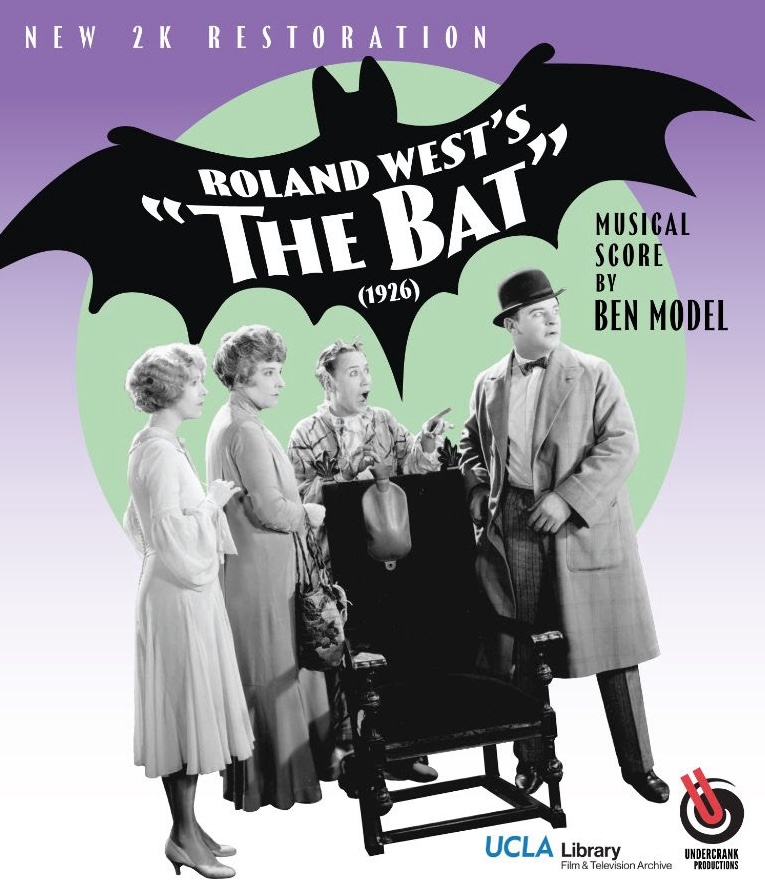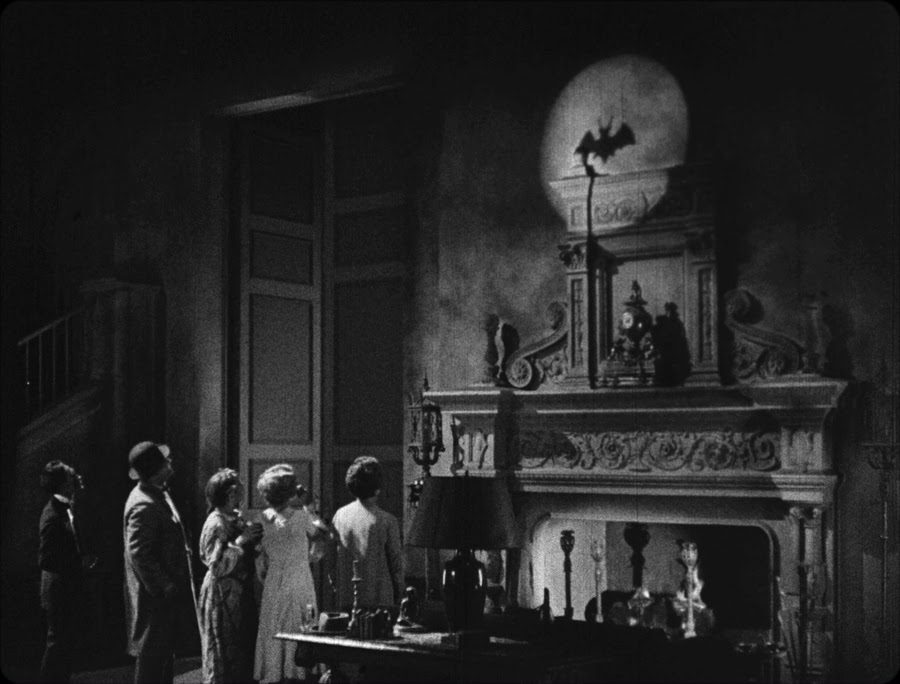Just in Time for Halloween, a 2K Restoration of Roland West’s 1926 Film ‘The Bat’ Arrives Via Undercrank
Even a cursory observer of mass media will experience a kind of inverse déjà vu upon watching the picture because it so clearly presages a DC Comics superhero, Batman.

The power behind the throne at Undercrank Productions, Ben Model, is an ardent film buff, proud Upper West Sider, and resident piano accompanist for the Library of Congress. Established in 2013, Undercrank produces and distributes DVD and Blu-ray editions of unheralded silent pictures. The business model is dependent on Mr. Model’s idiosyncratic enthusiasms and the kindness of like-minds on Kickstarter.
Among the movie stars lionized by Undercrank are recognizable names such as Marion Davies, Douglas Fairbanks, and Tom Mix, along with lesser lights including Alice Howell, Raymond Griffith, and Marcel Perez.
Just in time for Halloween, Undercrank is presenting a 2K restoration of Roland West’s “The Bat” (1926). The package comes with a new musical score by Mr. Model; a comedy short from the same year, “A Fraternity Mix-Up”; and a documentary on the life-and-career of director West. Although he worked with Lon Chaney and was nominated for an Oscar for the 1929 gangster flick “Alibi,” West is likely best remembered as an adjunct to the murky circumstances surrounding the 1935 death of comedienne Thelma Todd.

West became something of a hermit after Todd’s passing and stopped working long before his death at age 67 in 1952. Of the 14 West films on record, it’s fair to say that the best of them are “The Bat” and its talkie remake, “The Bat Whispers” (1932). The latter is among the first examples of widescreen cinematography, an innovation West employs with considerable panache. The picture careens, veers, and swoops more than most movies of the era.
“The Bat” is preferable, not least because it proved to have a lasting impact on popular culture. Even a cursory observer of mass media will experience a kind of inverse déjà vu upon watching the picture because it so clearly presages a DC Comics superhero, Batman. The creators of the character, Bill Finger and Bob Kane, had to have seen West’s picture: The commonalities in costumery and iconography are thundering — the bat signal is there to be seen in 1926, for Pete’s sake.
“The Bat” was based on a Broadway play written by Mary Roberts Rinehard and Avery Hopwood, which was based on Rinehart’s novel “The Circular Staircase” (1908). It’s a whodunit that touches on horror and borders on farce, a combination thriller, chiller, and screwball comedy. A genre-bender before the term was coined, “The Bat” looks forward to any number of entertainments, including James Whale’s “The Old Dark House” (1932), Charles Barton’s “Abbott and Costello Meet Frankenstein” (1948), and Jonathan Lynn’s “Clue” (1985).
Unlike Batman, the masked chiropteran here isn’t on the side of the law. Before the story proper begins to unfold, we watch as the Bat makes off with the fabled Favre jewels after having killed their owner — directly under the noses of the police. The Bat, an acrobatic criminal who wears a cumbersome mask, leaves a taunting note for the cops and heads to the country. Whereupon we learn about the death of a prominent banker, Courtleigh Fleming, and how his institution has been burgled in the amount of $200,000.

As it happens, Fleming Manor has just been rented for the summer by Miss Cornelia Gardner (Emily Fitzroy, a grande dame having a grand time). Her niece Dale (Jewel Carmen) is on hand, as is her beau Brooks Bailey (Jack Pickford). The latter has been accused of stealing the Fleming fortune and is masquerading as the estate’s new gardener to prove himself innocent.
Before you know it, a nephew, a doctor, a detective, another detective, a hysterical maid, “Billy the Butler,” and the Bat himself are running to-and-fro under the supposition that the loot has been stashed away in our dark-and-spooky mansion. The mystery cultivated by these environs is greater than that surrounding the identity of the title character, which shouldn’t make too much of a dent in the enjoyment taken in this wild and wooly picture.
You’ll need a scorecard to keep track of the characters: Continuity wasn’t West’s strong point. Mood was, however, and “The Bat” is heavy with German Expressionist portent and an almost balletic use of chiaroscuro. The real star of the movie is William Cameron Menzies, the set designer who crafted the environs of Fleming House with an eye for the grandiose as well as for the absurd. Elegance was his byword, as was hyperbole.
Menzies would go on to work with D.W. Griffith, Frank Capra, and Alfred Hitchcock as well as helming his own features, but here he boosts the proceedings with a distinctive theatrical sensationalism. Spectacle isn’t the sole reason to watch “The Bat,” but Menzies’s eccentricity does add oomph to a welcome package.

